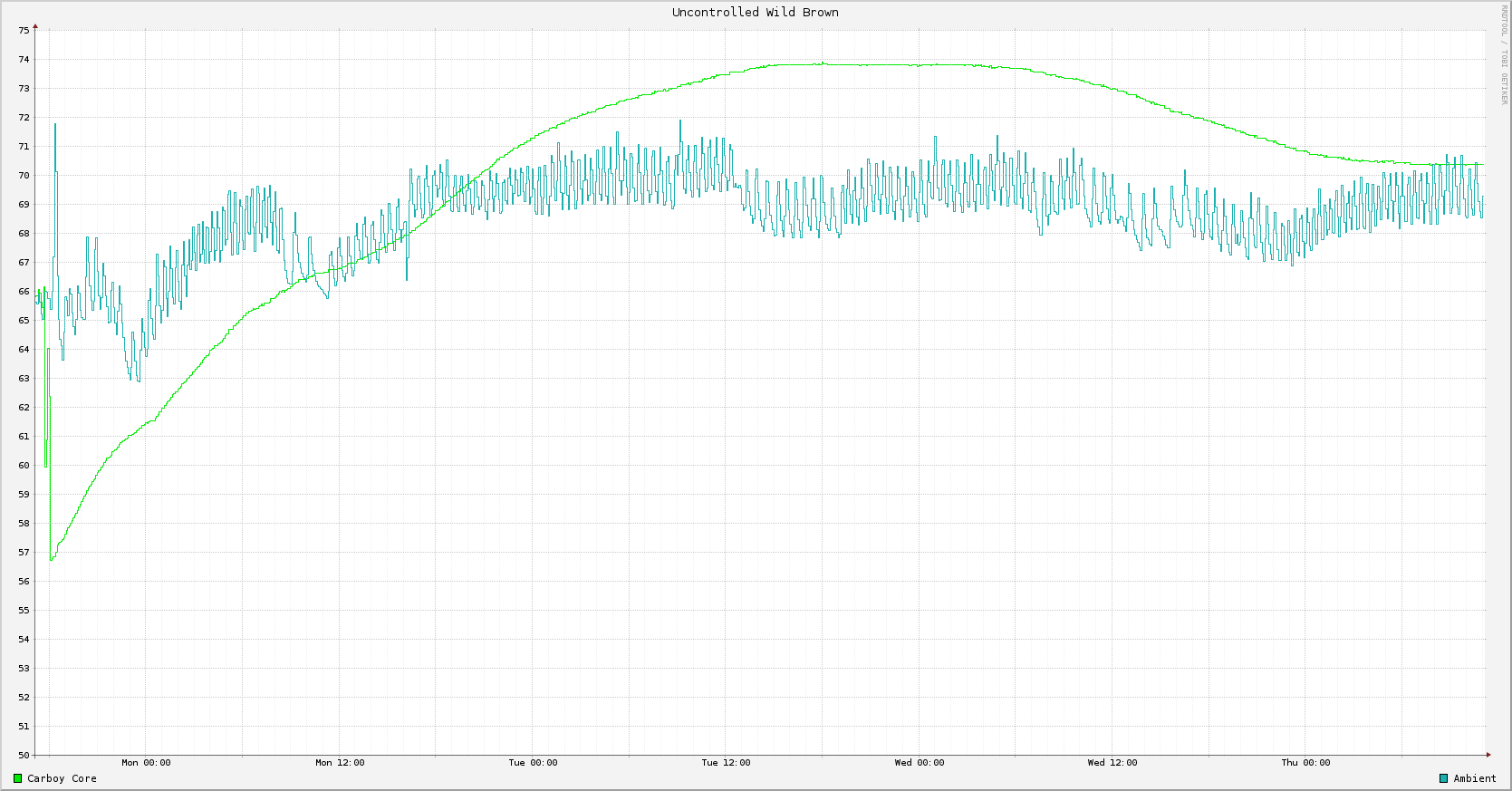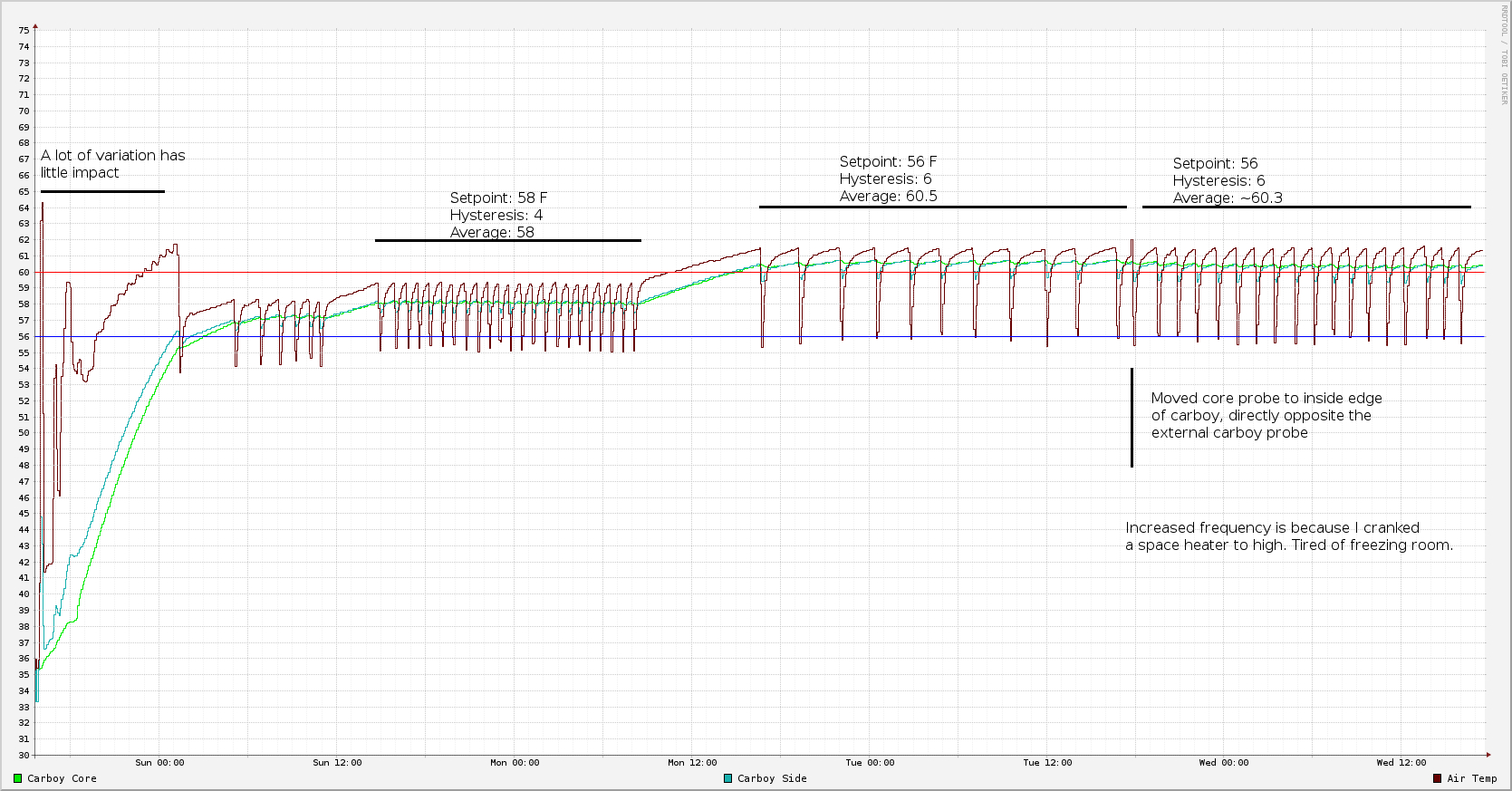I pitched my wild yeast into a brown. The other half is under control with Roeselare. I wanted to see how far above ambient temp active fermentation will go, so I was willing to let this run wild.
I keep reading "3 degrees", so I thought I'd test it. This might produce a headache beverage, but we'll in a few months.
As you can see, at peak, there was almost a 5 degree difference from the ambient midpoint. The zigzag room temp is because of a heater to keep the room livable. Of course, this is for a specific volume, pitch rate, oxygenation rate, and ambient temp, but it's probably indicative of most.

I keep reading "3 degrees", so I thought I'd test it. This might produce a headache beverage, but we'll in a few months.
As you can see, at peak, there was almost a 5 degree difference from the ambient midpoint. The zigzag room temp is because of a heater to keep the room livable. Of course, this is for a specific volume, pitch rate, oxygenation rate, and ambient temp, but it's probably indicative of most.




